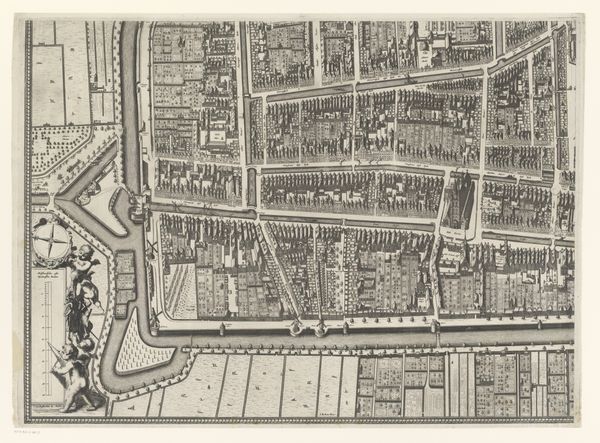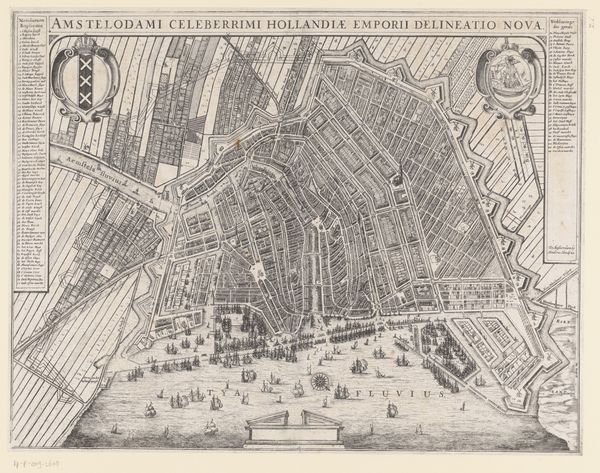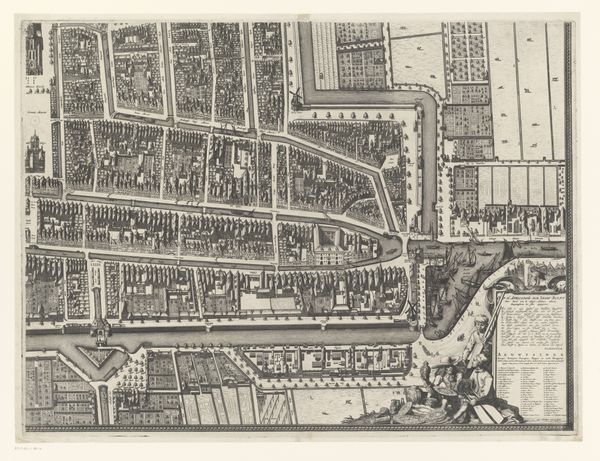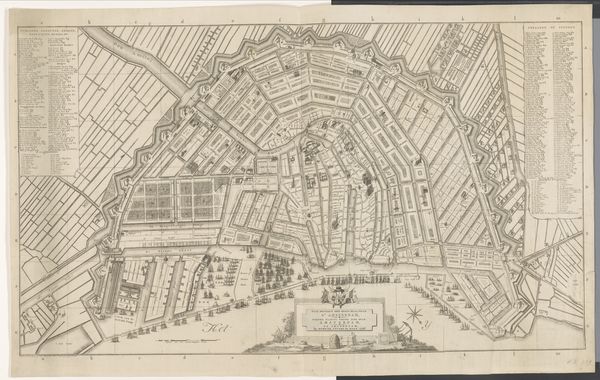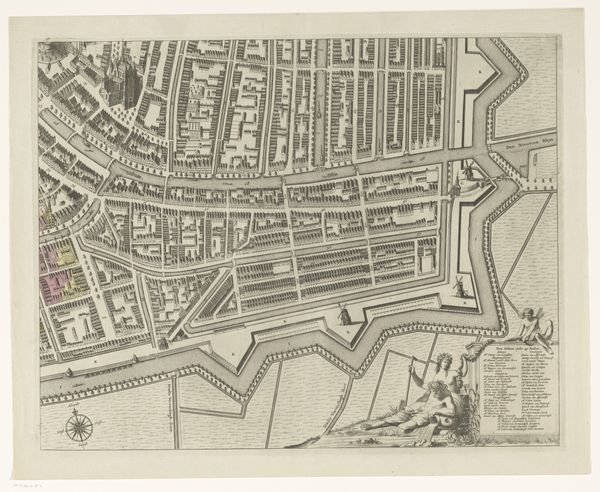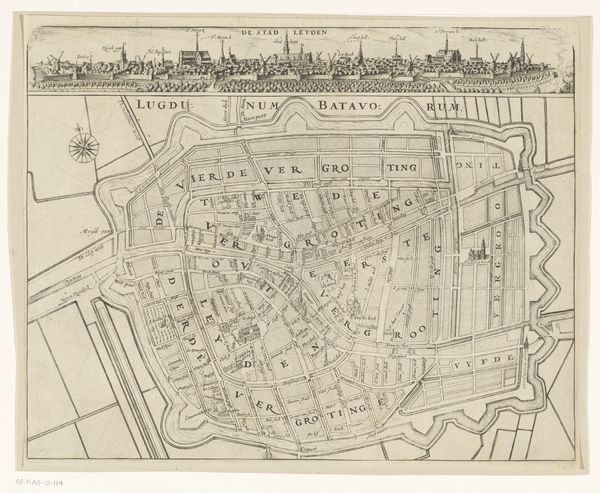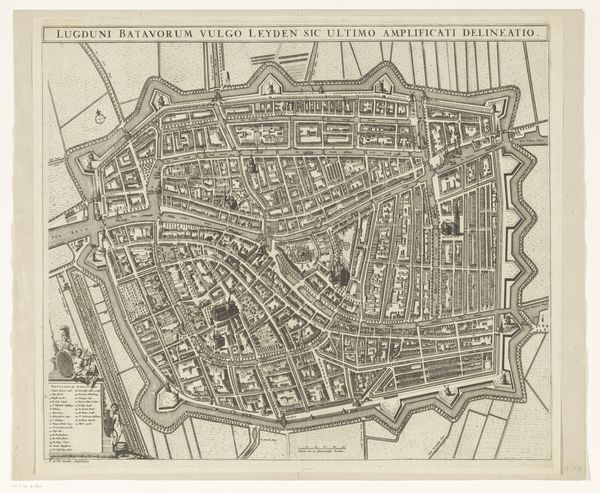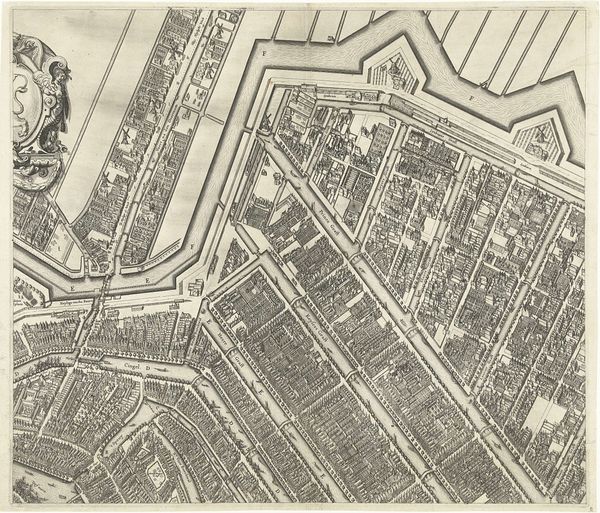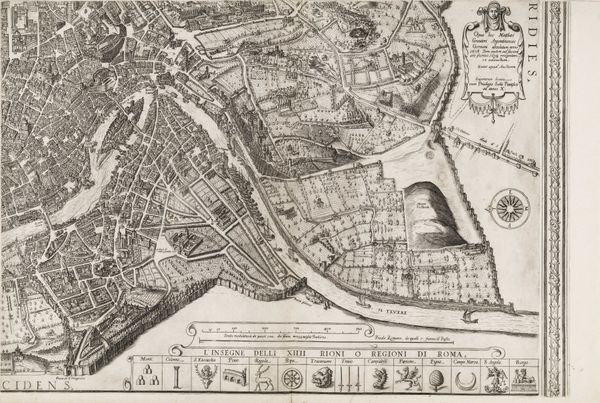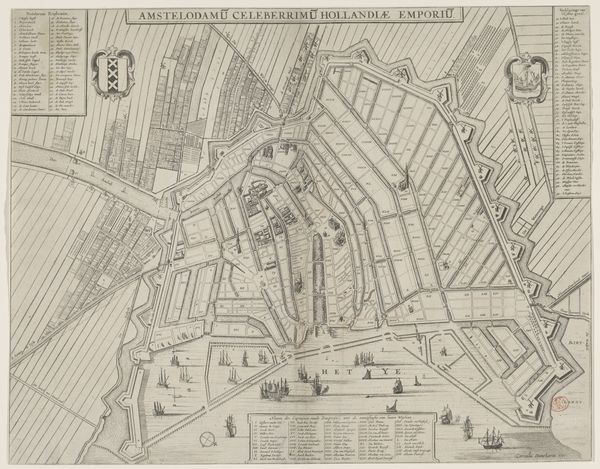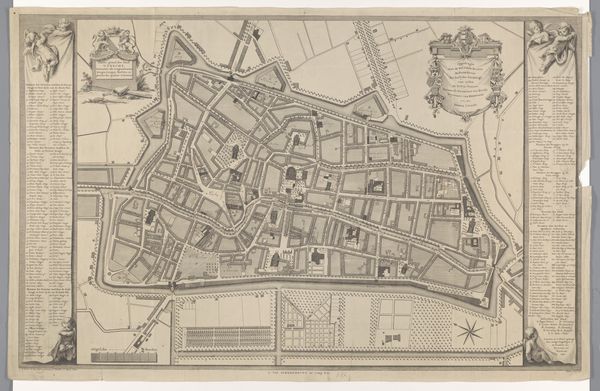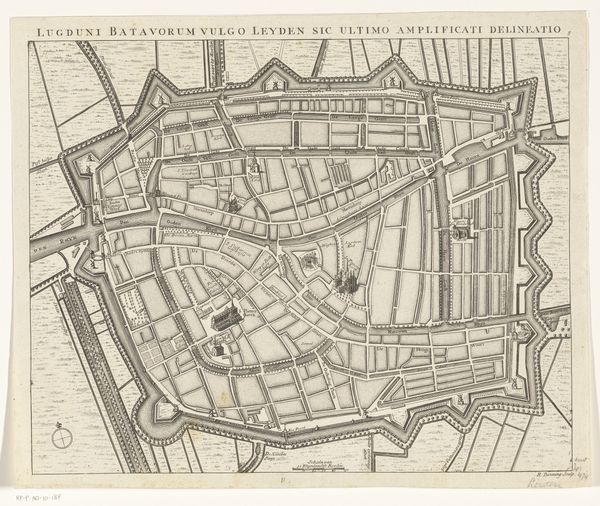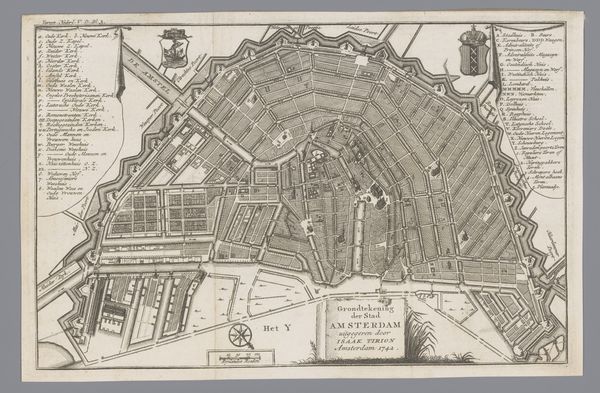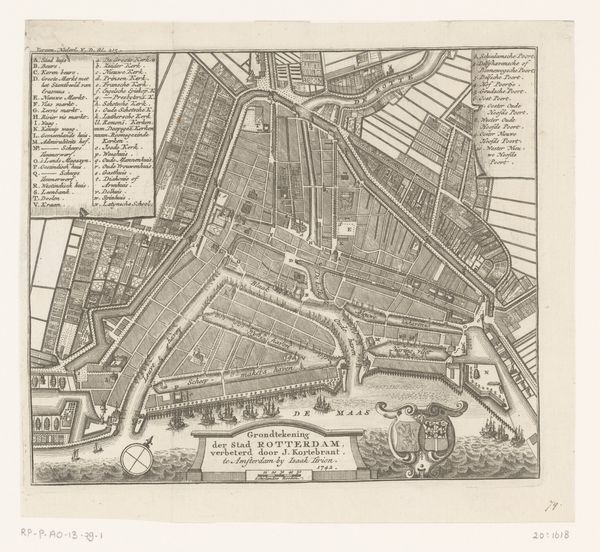
Plattegrond van Amsterdam (blad middenlinks), 1625 1625
0:00
0:00
balthasarfloriszvanberckenrode
Rijksmuseum
drawing, print, paper, ink, engraving
#
pen and ink
#
architectural sketch
#
drawing
#
dutch-golden-age
#
mechanical pen drawing
# print
#
pen sketch
#
old engraving style
#
paper
#
linework heavy
#
ink
#
geometric
#
pen-ink sketch
#
thin linework
#
pen work
#
cityscape
#
history-painting
#
engraving
#
intricate and detailed
Dimensions: height 460 mm, width 535 mm
Copyright: Rijks Museum: Open Domain
Editor: This is "Plattegrond van Amsterdam," a detailed city map created in 1625 by Balthasar Florisz. van Berckenrode. It’s crafted with ink on paper, using engraving techniques. What strikes me most is its sheer density and level of detail; it almost feels like a coded language. What stories do you think are hidden in the streets of this work? Curator: The “language,” as you say, is rich in symbolism. Note how the walls and waterways act as not only protection and conduits of trade, but also as signs of order, ambition, and control over the natural world. What does the imposing figure in the lower left, seemingly a Roman god, suggest to you? Editor: Perhaps that Amsterdam equates its growing importance with that of the ancient empires? There’s certainly a declaration of power, I would say, a civic boast. Curator: Exactly. The grid layout also represents a desire to impose rationality, a very specific world view. Look closer: notice how the churches and important civic buildings are given prominence. This represents the hierarchy and communal values. Do you think such carefully crafted representation had an impact on the city's self-image? Editor: I imagine it must have reinforced civic pride. By visually ordering Amsterdam in this way, Berckenrode arguably also shaped its perception both within and outside its walls. It served both as document and propaganda. Curator: Precisely. It’s fascinating to consider how maps, beyond being functional tools, actively participate in the construction of collective memory and identity. Editor: I'll never look at a map the same way again. It's like archaeology on paper. Curator: Indeed! We have excavated a rich history within those intricate lines.
Comments
No comments
Be the first to comment and join the conversation on the ultimate creative platform.
